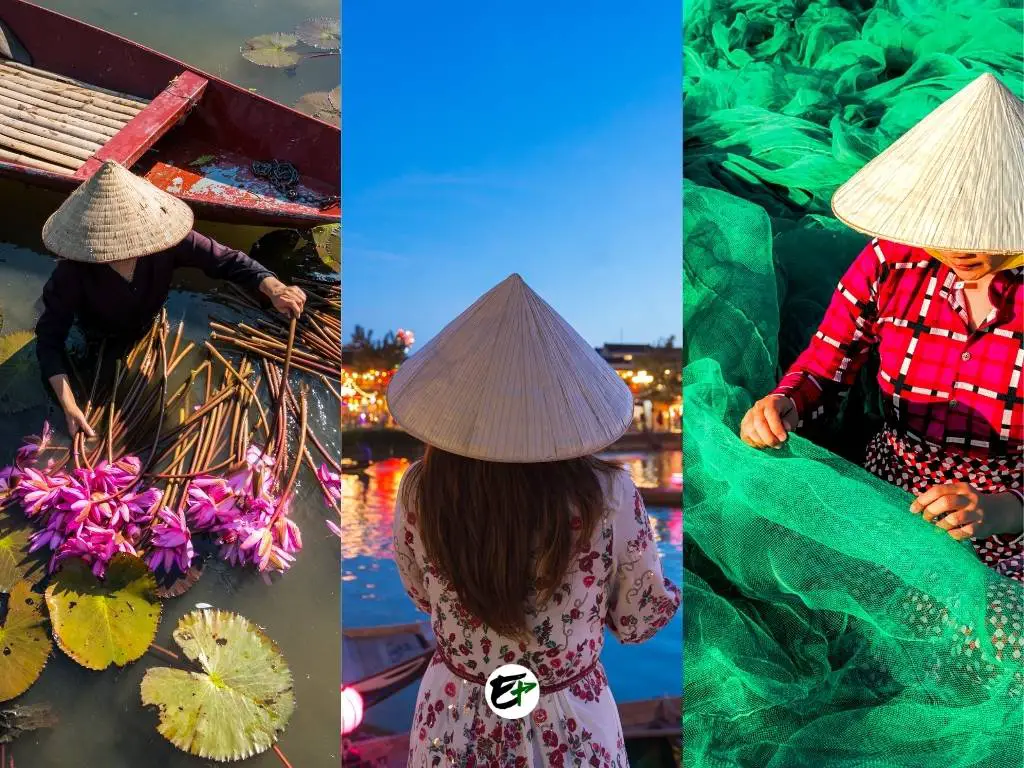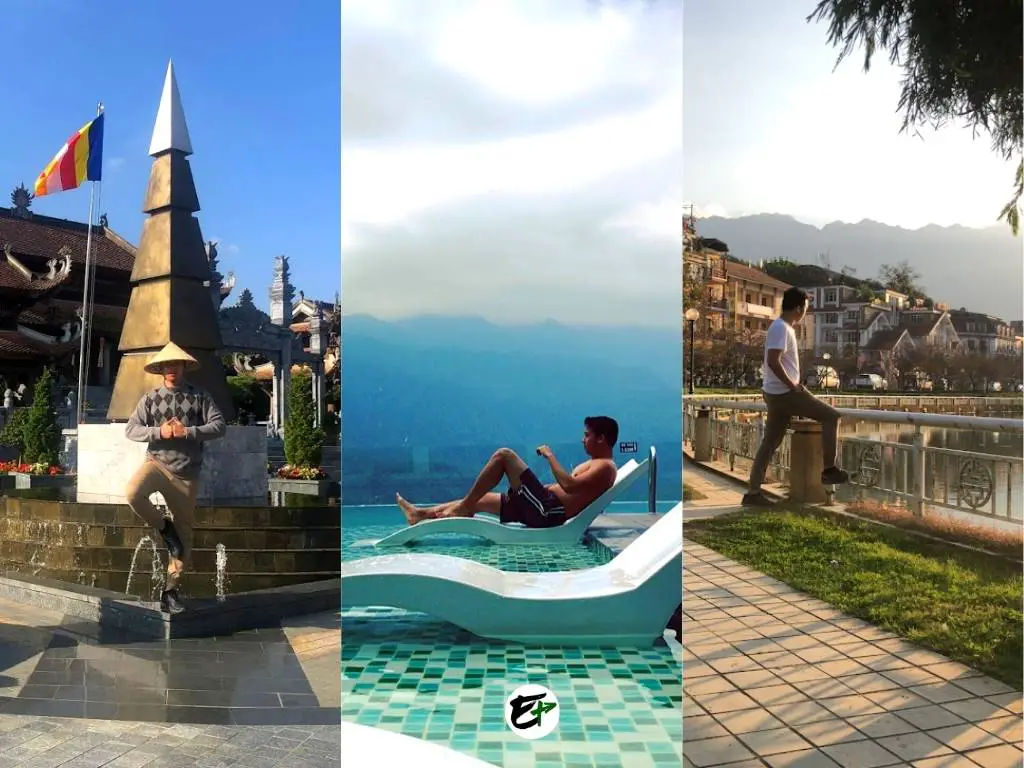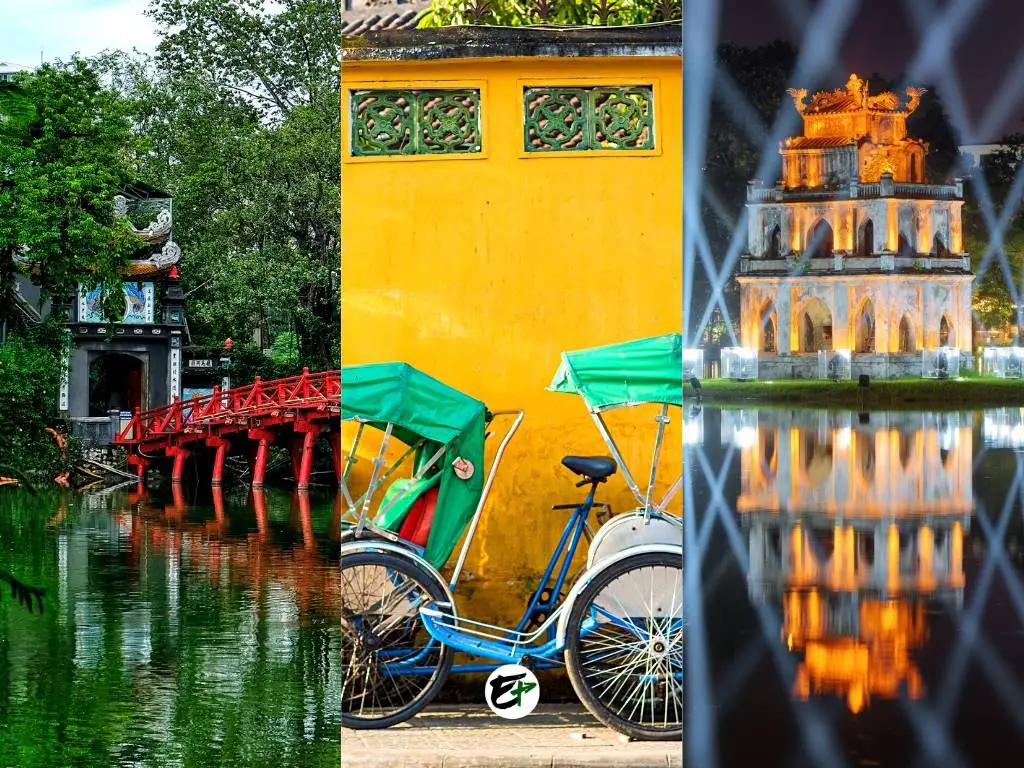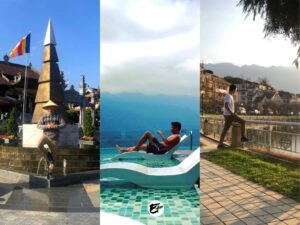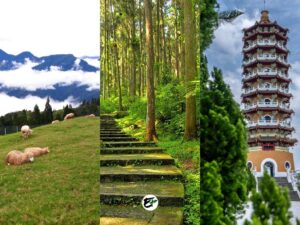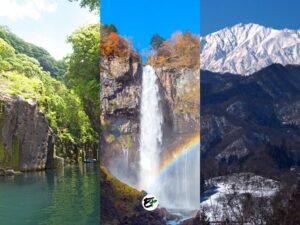Landscapes in Vietnam: 7 Most Spectacular Places to Visit
I was really impressed by the culture and amazing views in Vietnam during my short trip.
The landscapes and sceneries I saw make me want to go back for more. I felt like I had only seen a small part of what Vietnam has to offer.
So, I decided to learn more and make a list of all the things I want to see again and what I still need to explore. In this blog post, you’ll find out about places in Vietnam with beautiful views.
The list includes places with great views of mountains, canyons, interesting rock shapes, and even waterfalls.
This post contains affiliate links. I may receive a tiny commission at no additional cost to you.
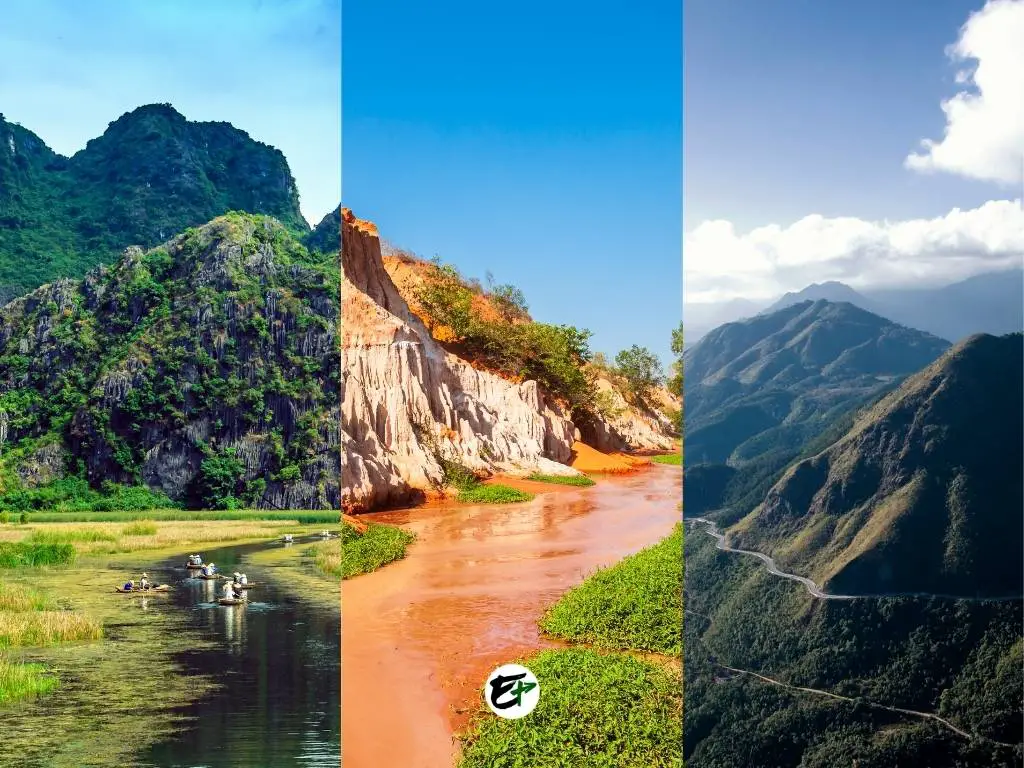
Use the table of contents to skip to topics.
Check out my other blog posts about Vietnam
Looking for a place to stay in Vietnam? Here’s where you can find great accommodation deals.
For each location in Vietnam known for its stunning landscape that I’ll discuss, I’ve also included additional activities you can enjoy. This information will assist you in determining whether the place is worth visiting for more than just the views.
Now, let’s begin our journey through these destinations, starting from the north and moving south.
1. Ha Giang
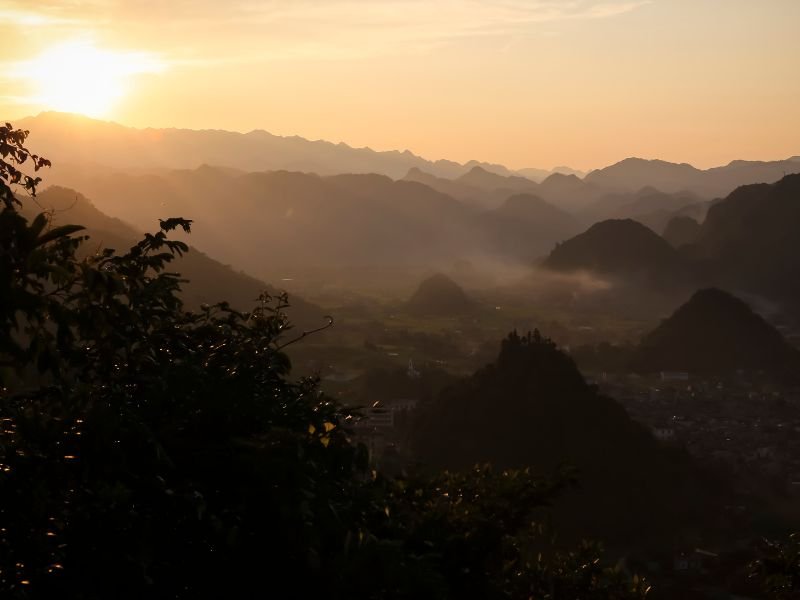
Ha Giang, the northernmost province in Vietnam, offers breathtaking views of limestone mountains, winding roads, and stunning terraced rice fields. Located 290 kilometers from Hanoi, it’s a 6-hour drive to this scenic destination.
Often referred to as Vietnam’s final frontier, Ha Giang shares a 270-kilometer border with China. From the Lung Cu Flag Tower, visitors can gaze across the border into China. This tower, the last outpost in Vietnam before reaching China, proudly flies the Vietnamese flag.
The tail end of the Himalayas extends into Northern Vietnam, providing Ha Giang and its surrounding towns with spectacular landscapes. These include mountain ranges, valleys, and plateaus, forming a beautiful tapestry of natural features. The region is also home to several renowned attractions known for their scenic landscapes as indicated below.
Dong Van Karst Plateau Geopark
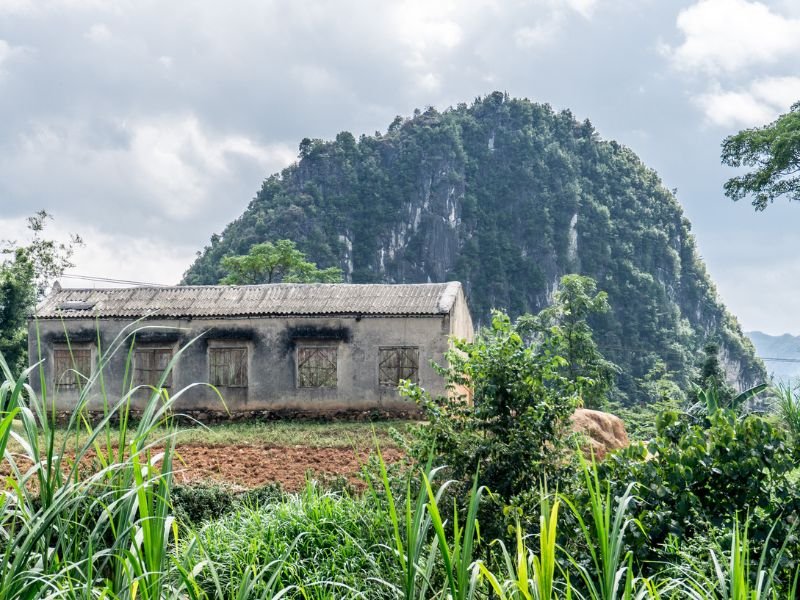
Spanning an area of 2,356 square kilometers, the Dong Van Karst Plateau Geopark stands out as a unique limestone region in Vietnam.
Here, you can witness remarkable traces that narrate the story of the formation of the earth’s crust. The limestones present were shaped by geological forces and various stages of nature’s evolution.
These limestones make up a significant portion of the geopark’s landscape, accounting for about 80% of the rock formations you’ll encounter.
Hoang Su Phi

Hoang Su Phi, a district in Ha Giang, is about a six-hour drive from Hanoi. The landscape here is dominated by steep mountains. You’ll mostly find picturesque valleys dotted with herbs and trees.
The district is known for its magnificent rice fields, which were recognized as a National Heritage site in 2012. These fields are considered one of the most remarkable sights in Vietnam.
In addition to its natural beauty, Hoang Su Phi is home to a unique indigenous community. It’s believed that 12 different ethnic minorities reside here. If you’re interested in exploring diverse cultures and venturing off the beaten path, this place is worth a visit.
Tu San Canyon

Tu San Canyon is a must-visit for its breathtaking landscapes, shaped by millions of years of erosion and geological activity.
This canyon is part of the Dong Van Karst Plateau Geopark. It’s thought to be the deepest canyon not only in Vietnam but also in Southeast Asia.
Quan Ba

Quan Ba, another notable spot in Ha Giang and the Dong Van Karst Plateau Geopark, is worth a visit. It’s also known as Co Tien Mountain or Mount Fairy poetry.
From afar, Quan Ba Twin Mountain resembles two peaches, a natural masterpiece. This Vietnamese landscape is tied to a heartwarming legend about a devoted couple.
Happiness Road

Constructed between 1959 and 1965, the Happiness Road stretches across the Dong Van Rocky Plateau. This road, with a total length of 185 kilometers, connects the Ha Giang township with the remote mountainous districts of Quan Ba, Yen Minh, Dong Van, and Meo Vac.
The road was built with the aim of providing different ethnic minorities with access to the plains, thereby enhancing their living conditions. The Happiness Road, with its winding path, offers scenic mountain views and intriguing road shapes.
Other attractions in Ha Giang
In addition to its breathtaking sights, Ha Giang offers a range of exciting activities:
- Start with a visit to Lung Cam Village. Here, you can witness the simple and serene lifestyle of the Hmong ethnic people, set against the backdrop of a rocky plateau.
- Next, explore the Vuong Family Mansion. This architectural marvel, crafted by Hmong people and artisans from Yunnan, China, is a sight to behold.
- Finally, take a trip to the Dong Van Old Quarter. As the highest old quarter in Vietnam, it boasts centuries-old Chinese architecture. The stunning mountains and verdant rice fields that surround it enhance its beauty. This is a place you must see when visiting Ha Giang.
Want to stay in Ha Giang for several days? See the best hotel deals in Ha Giang here.
2. Sapa
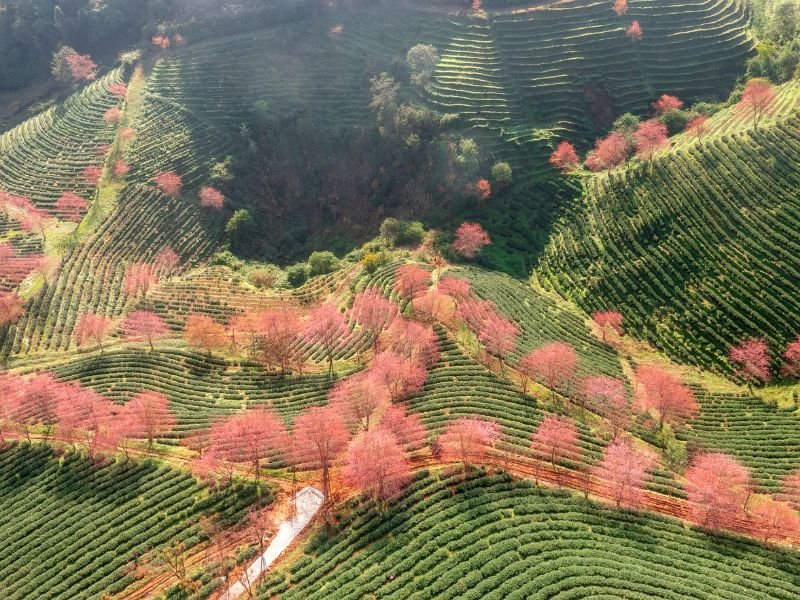
Sapa is a picturesque, small mountain town located in the Lao Cai Province. This town, which is about 350 km northwest of Hanoi, is known for its stunning landscape.
In Sapa, you’ll find the Hoang Lien Son mountain range. This includes Fansipan, the highest peak in the country, often referred to as the roof of Indochina. At Fansipan, you can witness the awe-inspiring phenomenon known as the sea of clouds. It’s an experience that will make you feel as if you’re in a heavenly place.
The area surrounding Sapa is home to numerous hill tribes, terraced rice fields, and abundant greenery. Unlike Ha Giang, Sapa is more accessible to tourists and travelers.
Being located in the northern region of Vietnam, Sapa offers magnificent views of the mountainous end of the Himalayas. When you visit, you can expect to see misty, dreamlike views of the mountains and terraced rice fields in the highlands.
As for the most visited places in Sapa known for their scenic landscapes, they include:
Mount Fansipan
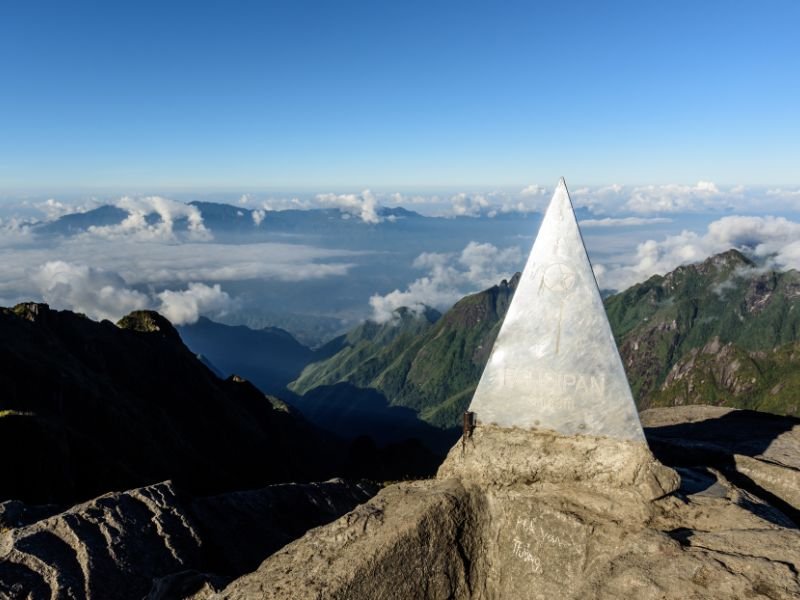
Fansipan Mountain, part of the Hoang Lien Son Range, is situated just 9 kilometers from the heart of Sapa Town in Lao Cai Province, Vietnam. It holds the title of the highest point in Indochina.
The journey to the summit offers rewarding views. You’ll pass through a dense jungle and witness the grandeur of the Hoang Lien Son range. Along the way, you’ll encounter peaceful tribal villages and catch sight of wild Azaleas near the peak.
Thanks to the Fansipan Cable Car, reaching the top of this mountain has become a quick 15-minute journey.
Ham Rong Mountain Park

Ham Rong Peak, also known as Dragon Jaw Mountain, resembles the head of a dragon. It looms in the early morning mist, creating a mystical atmosphere.
Ham Rong is a haven for flower enthusiasts and garden lovers. It hosts an impressive variety of over 194 different flower species and is home to 6000 orchid plants.
Muong Hoa Valley

Muong Hoa stands out for its terraced rice fields nestled in the valley. These fields are a testament to the ingenious water rice planting techniques employed by the Dao and Hmong people in the mountains.
The blend of Muong Hoa Valley’s natural splendor and the hard work of the farmers has resulted in captivating paddy fields. These fields, with their mesmerizing patterns of rice paddies, leave tourists spellbound.
Silver Waterfall
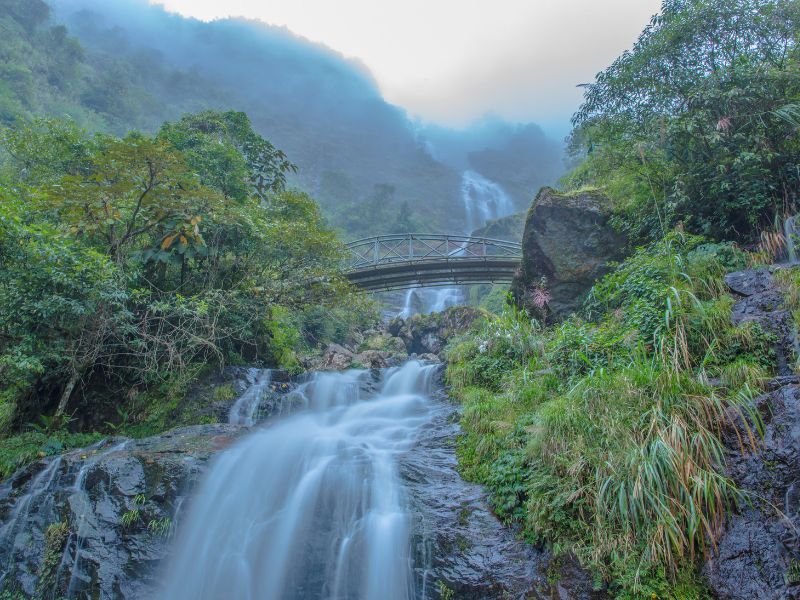
Silver Waterfall, one of Vietnam’s most stunning waterfalls, is situated about 15 kilometers from the center of Sapa town. It stands alongside National Highway number 4D and boasts a height of 100 meters.
Visitors often liken the Silver Waterfalls to a massive white dragon, roaring as it descends from the clouds. Its presence significantly enhances the beauty of the neighboring mountains and lush forests.
Ta Van Village

Nestled in the Hoang Lien Son Mountains of Northwest Vietnam, you’ll find Ta Van village. This village is a welcoming home to the Giay people, one of the ethnic minorities in Sapa.
Ta Van village is also renowned as a popular overnight stop on the Sapa trekking trail. It’s an excellent spot to witness the spectacular terraced rice fields that northern Vietnam is known for.
O Quy Ho Pass

The O Quy Ho Pass, located in the Hoang Lien Son mountain range, is often referred to as the “Heaven Gate.” This pass is situated 2000 meters above sea level, spanning across the Lai Chau province, Sapa, and Tam Duong districts.
For adventurers, this place is a paradise, offering challenging roads and picturesque mountain views. Its unique features have earned it the title of the “King of Passes in Northwest Vietnam.”
Other attractions in Sapa
Wondering what else to do in Sapa, Vietnam? Here are some suggestions:
- Explore the Sapa Love Market. This market, held every Saturday night in the town center of Sapa, showcases the traditions, customs, and beliefs of the Dao, Hmong, and other ethnic groups.
- Take a trip to Cat Cat Village. Surrounded by rice terraces and rolling green hills, this village is a popular spot for trekking, sightseeing, and experiencing mountain life. Here, you can enjoy the serene views and learn about the unique customs and traditions of the Hmong ethnic group.
- Visit the Sapa Church. This century-old church, located in the heart of Sapa, was built by French colonists in the twentieth century. It’s one of the most popular tourist attractions in the town.
- Spend some time by Sapa Lake. This picturesque lake offers a calm and peaceful spot to relax before the sunset.
- Finally, take a ride on the cable car and funicular trains. Enjoy a relaxing trip with stunning views as you ascend to the summit of Mount Fansipan in just 15 minutes.
You might like to check the relaxing things to do in Sapa after going on an adventure.
Planning to visit Sa Pa? Check out these great accommodation deals in Lao Cai province.
3. Halong Bay
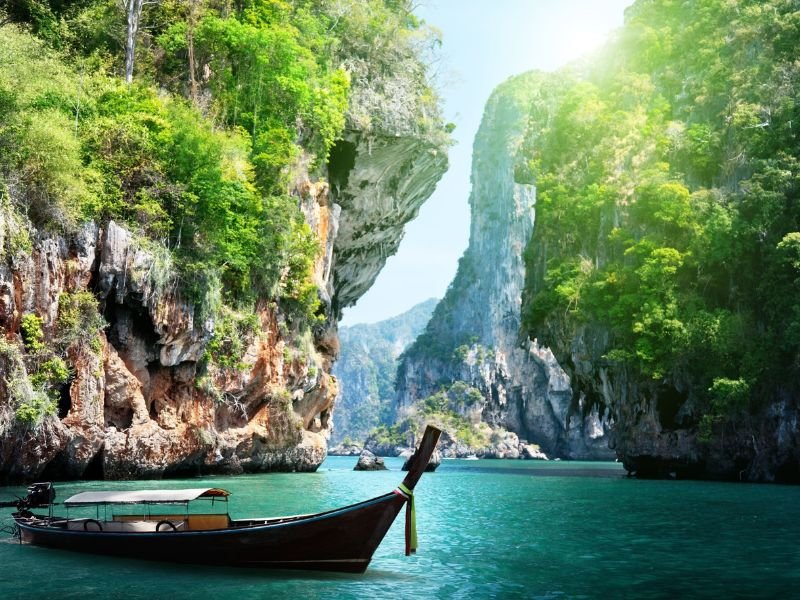
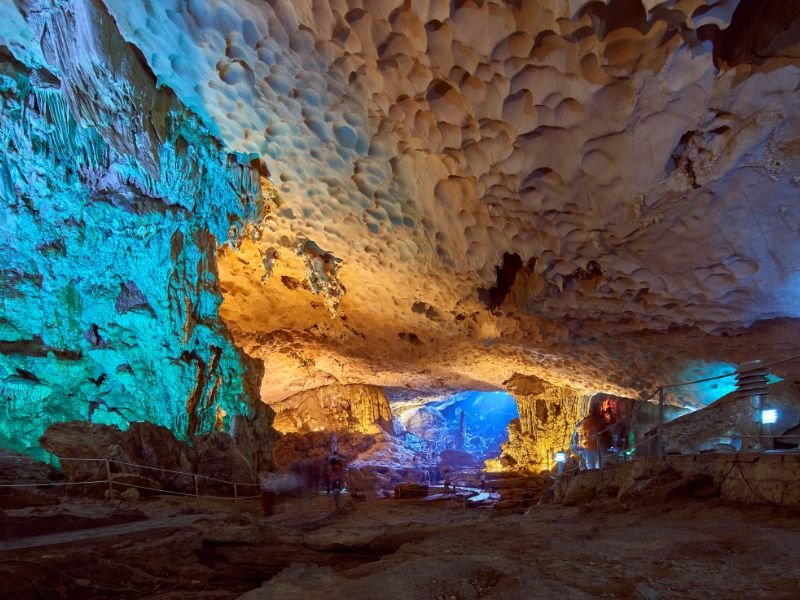
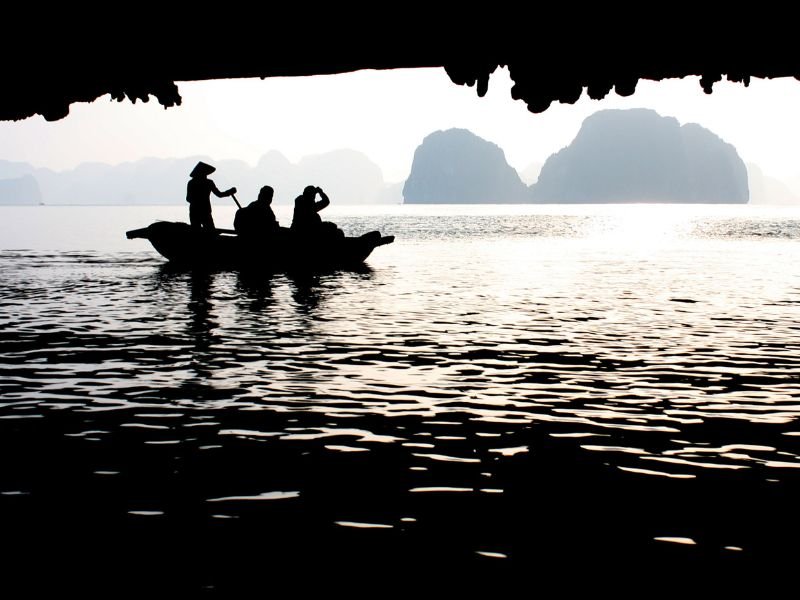
If I were to pinpoint the place in Vietnam that first sparked my interest, it would undoubtedly be Halong Bay. This natural marvel is situated 170 kilometers east of Hanoi.
Halong Bay, a UNESCO World Heritage site, has been featured in numerous films. It’s renowned for its epic landscape and striking limestone island hills.
But there’s more to Halong Bay than just its scenic views. It also serves as a marine sanctuary, hosting a diverse range of biodiversity.
Halong Bay offers more than just the view of island-mountains from the shore and cruises. It’s also home to beautiful gorges and caves filled with awe-inspiring rock formations.
Things to do in Halong Bay
Wondering what to do in Halong Bay, Vietnam? Here are some suggestions:
- Visit the Vung Vieng Floating Village. It’s hard to believe, but sea settlements do exist, and you can find one right here in Halong Bay. What’s even more fascinating is that these communities have been residing in Bai Tu Long Bay for generations. Meeting the villagers from this floating village, located northeast of Halong Bay, promises to be a unique experience.
- Explore the Dau Go Cave and Thien Cung Cave. These caves in Halong Bay are home to hundreds of stalactites and other rock formations. With ample lighting, you can appreciate every detail of these caves.
- Hop on a Cruise. There’s no easier way to see all the must-visit spots in Halong Bay than by taking a cruise around the bay.
- Go Snorkeling and Diving near Cong Do Island. Don’t miss the chance to explore what lies beneath the surface of Halong Bay. The marine life here is another sight to behold.
Find your affordable dream hotel in Halong Bay here.
4. Ninh Binh
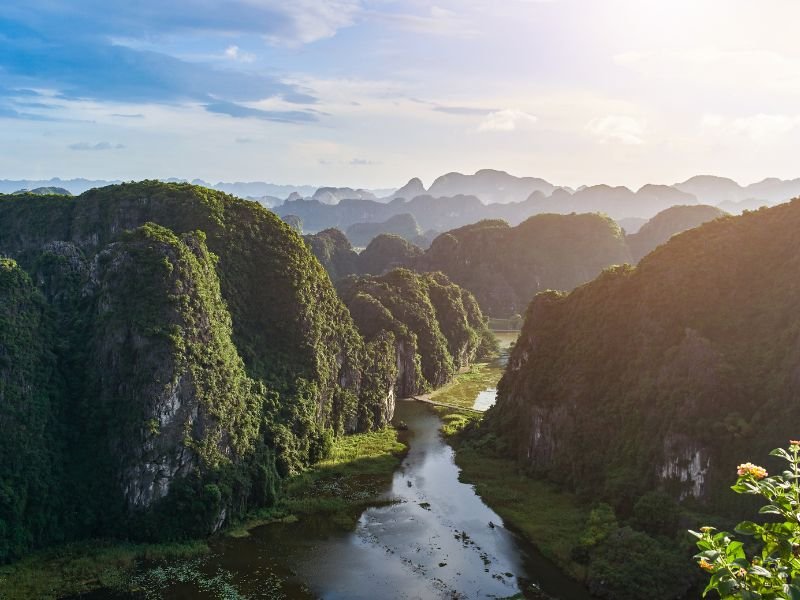
Traveling further south, we arrive at Ninh-Binh, a region abundant with limestone hills. Often referred to as “the Halong Bay on Land” by locals and tourists alike, Ninh Binh shares the same striking limestone features as Halong Bay. Just like in Halong Bay, you can navigate around each towering mountain via a boat ride.
Ninh Binh holds historical significance as the site where Vietnam’s first capital was established. A visit here offers a glimpse into ancient Vietnam and a journey through the incredible karst-filled landscape in the Red River Delta.
Ninh Binh presents a unique blend of three different types of topography. As you move from west to east, you’ll observe the landscape transition from mountainous to river delta, and finally to a coastal zone.
Climbing one of the viewpoints in Ninh Binh offers a clear view of this magnificent landscape transition from hilly to mixed, and then to flat. The scenery is captivating, no matter which angle you choose to look from.
Now, let’s explore the list of destinations where you can witness more of Vietnam’s extraordinary landscapes in Nihn Bihn.
Trang An
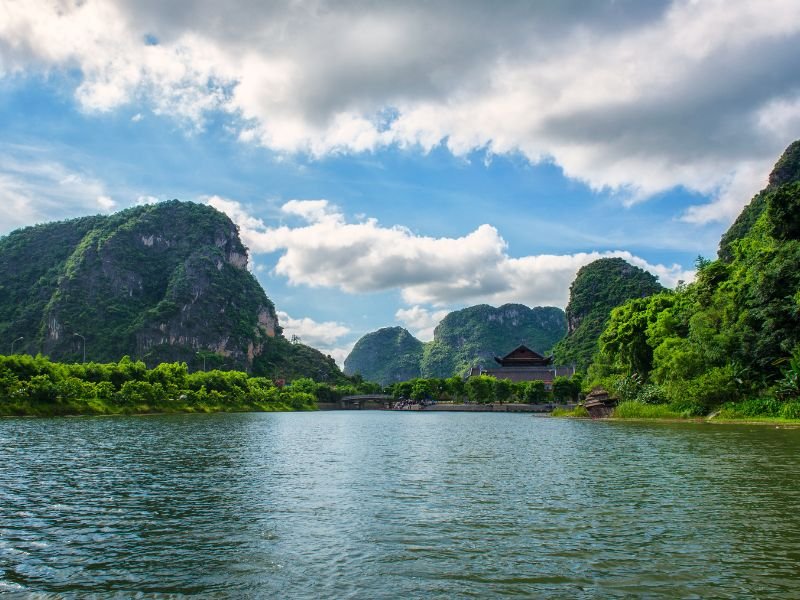
The Trang An Scenic Landscape Complex is a well-known area famous for its boat cave tours. These tours take you along a river that winds through a valley filled with protruding limestone karst.
On the 23rd of June 2014, Trang An earned the distinction of being a UNESCO World Heritage Site, a recognition it shares with Halong Bay.
But there’s more to Trang An than just limestone karst. The area also boasts beautiful grottos and centuries-old temples. Additionally, you’ll find caves housing hundreds of wine jars, adding to the area’s unique experience.
Tam Coc

Tam Coc, located in Ninh Binh, offers an experience similar to Trang An. Here, you can embark on a boat tour that takes you through caves and past towering limestone karst formations.
There are two distinct features that set Tam Coc apart from Trang An. The first is the unique method of rowing the boat using feet, a practice common in Tam Coc.
The second is the passage through what is commonly referred to as the Green Sea. This term is used to describe the lush rice fields that you’ll see during your boat ride, nestled alongside the limestone karst in Tam Coc.
Hang Mua Peak
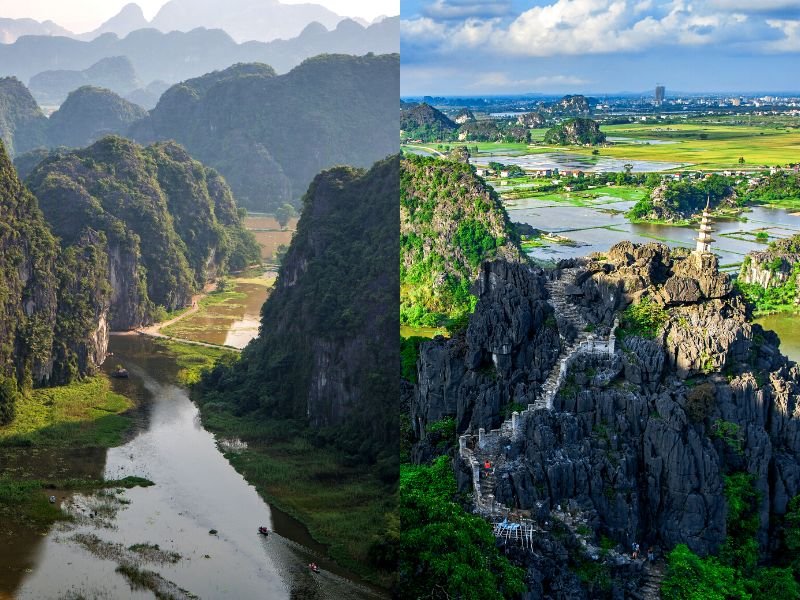
This viewpoint offers a panoramic view of Tam Coc and parts of Ninh Binh.
From one side of Hang Mua Peak, you can see the town’s fields and the Red River Delta. It’s a sight that captures the essence of the region’s natural beauty.
On the opposite side, your eyes are treated to the sight of the incredible limestone karst. These formations stretch far into the west, creating a stunning landscape that leaves a lasting impression.
Van Long Wetlands
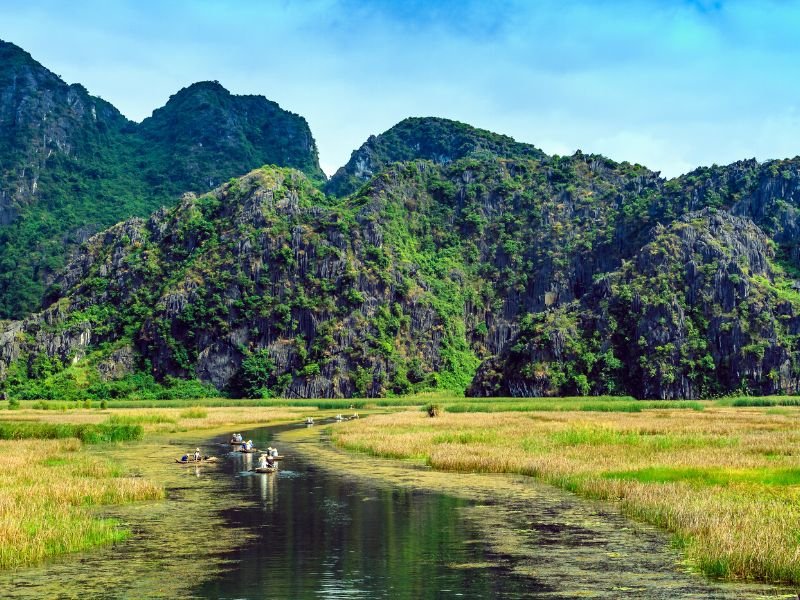
From Hang Mua Peak, you might catch a glimpse of the Van Long Wetlands. This area is situated at the northernmost tip of the Pu Luong-Cuc Phuong limestone mountain range.
Van Long Wetlands holds the distinction of being one of the few remaining intact lowland inland wetlands in the Red River Delta.
The site is characterized by a cluster of limestone karst outcrops. These formations rise dramatically from the flat coastal plain of northern Vietnam.
More things to do in Ninh Binh
Ninh Binh holds historical significance as the first capital of Vietnam you must visit, too.
- Start your adventure by climbing the Bich Dong Pagoda. This site offers an elevated view of the fields and surrounding mountains. The pagoda is structured in three layers, each offering a unique sight to behold.
- Next, take a stroll through Bai Dinh Pagoda. After soaking in the magnificent landscape, this site is a must-visit. It’s the largest Buddhist temple in Southeast Asia and houses more than 500 Buddhist statues.
- Venture into the ancient village of Hoa Lu. This place is rich with temples and intriguing remnants from the past. It’s a worthwhile visit, especially for history enthusiasts.
- Finally, rejuvenate yourself with a hike in Cuc Phuong National Park. This natural sanctuary is home to a variety of trees, some of which are over a thousand years old.
Further reading: Discover the unmissable things to do in Ninh-Binh!
Visiting Ninh Binh soon? Find the Ninh Binh best hotel deals here.
5. Quang Binh
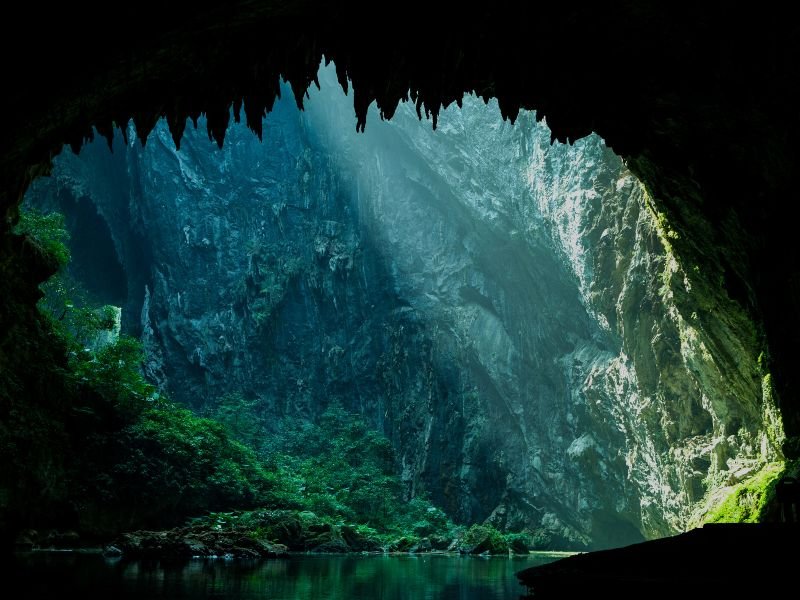
Quang Binh is a province in Vietnam, situated approximately 490 kilometers south of Hanoi. This region, the narrowest in Vietnam, is often referred to as “the Kingdom of The Caves” due to the multitude of remarkable caves found here.
The sense of adventure is what makes Quang Binh an enticing destination. The stunning landscapes, such as the limestone mountains and the world’s largest cave, add to its appeal.
The geography of Quang Binh is diverse, encompassing mountains, lowlands, forests, waterways, and beaches. This variety contributes to its attractiveness as a destination, offering a wealth of sights to explore. The following are locations where you can witness the incredible landscapes of Quang Binh:
Chay River
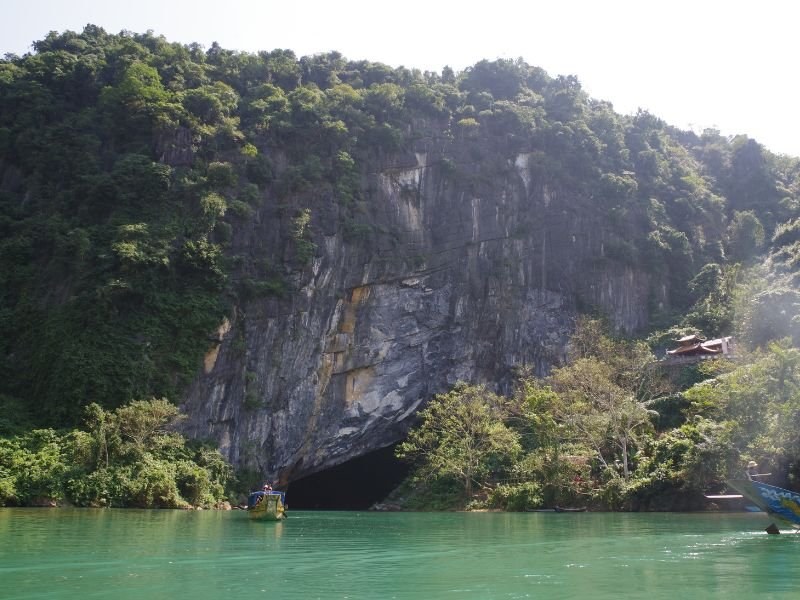
The Chay River, located in Phong Nha, Quang Binh, is surrounded by limestone mountains covered in lush vegetation. This setting provides a picturesque backdrop for water sports activities. Opportunities for adventure include kayaking and cruising along the pristine waters of the Chay River.
Dark Cave
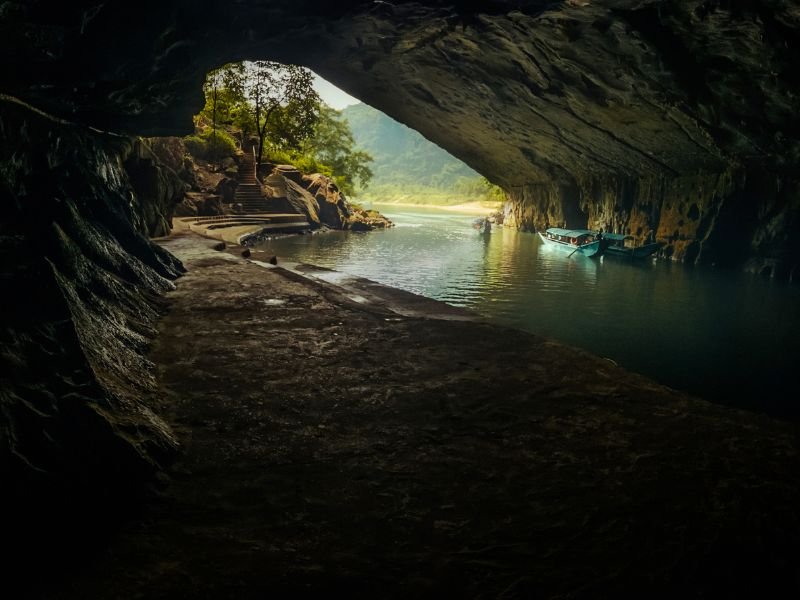
The Chay River flows into what is commonly known as the Dark Cave, or Hang Toi. This cave is notable for its striking ceiling rock formations. However, to truly appreciate them, you’ll need to bring your own source of light.
Inside the Dark Cave, there’s another unique experience waiting for you. It has a mud bath that is said to have nourishing properties.
Paradise Cave

Paradise Cave holds the title of the longest dry cave in Asia, stretching an impressive 31.4 kilometers. It has earned the nickname “the Underground Palace” due to its stunning rock formations that seem to defy the limits of human imagination.
The images of this cave that I encountered on the internet left a strong impression on me. However, photographs can only capture so much. An actual visit to the Paradise Cave promises to be an unforgettable experience.
Son Doong Cave
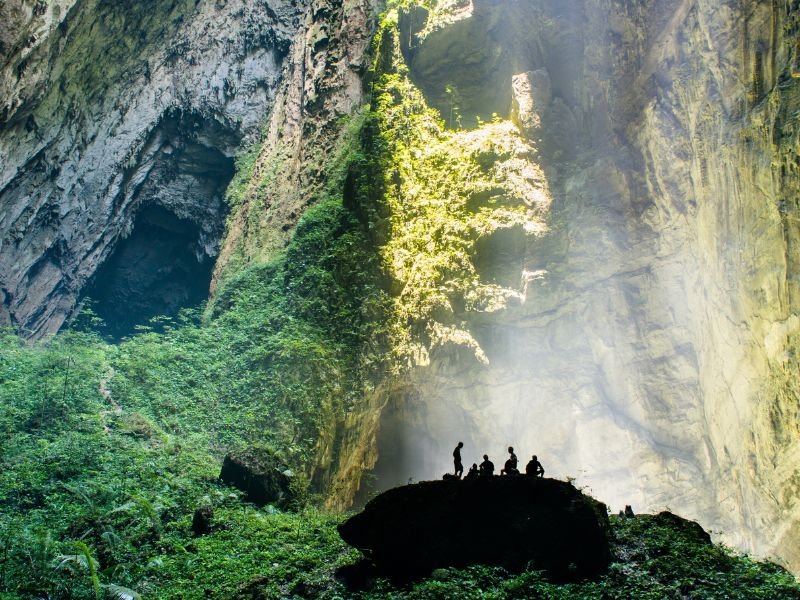
Son Doong Cave, located in Central Vietnam, holds the title of the world’s largest cave. It’s often referred to as “Vietnam’s Great Wall” due to its vast size and the breathtaking landscapes within. The scale of Son Doong Cave is so immense that it could accommodate a 40-story building!
This natural wonder is a place I eagerly anticipate visiting. Describing the beauty of Son Doong Cave in words is challenging. To better convey its magnificence, I recommend this virtual tour of Son Doong Cave from NatGeo.
More things to do in Quang Binh
Indeed, Quang Binh is an adventurer’s paradise. Here are a few activities that promise fun and excitement:
- Experience the thrill of ziplining and kayaking in the Chay River. Before venturing into the dark cave, enjoy splashing in the river’s vibrant blue waters.
- Refresh yourself with a spring bath in Nuoc Mooc. This is a great way to cool off from the tropical heat.
- If you’re a beach lover, consider a holiday at Bao Ninh Beach. For those who prefer the sea over freshwater, Bao Ninh offers a relaxing beach experience.
Staying in Quang Binh for several days? Find the best accommodations deals in Quang Binh here.
6. Da Lat

Da Lat, the largest city in Vietnam’s central highlands, is situated 1500 meters above sea level. Its elevation results in a cooler climate, distinguishing it from other low-lying towns and cities in Vietnam. This unique climate has earned Da Lat the nickname “The City of Eternal Spring.”
While I didn’t find attractions in Da Lat that rival the awe-inspiring Son Doong Cave or Tu San Canyon, I did discover that the city is home to stunning waterfalls. These are sights that many might appreciate when traveling in Vietnam.
The terrain of Da Lat can be divided into two categories: mountainous areas and lowlands. The change in elevation between these two regions results in the formation of spectacular waterfalls on the city’s outskirts. The following are some of the landscapes and waterfalls you can explore in Da Lat:
Pongour Falls

Pongour Falls, the most renowned waterfall in Da Lat, boasts a cascade that is 40 meters high and 100 meters wide. Its unique features include a terraced shape and polished steps, which contribute to its picturesque appeal. Situated in the heart of a forest, Pongour Falls promises a truly refreshing experience for visitors.
Elephant Falls
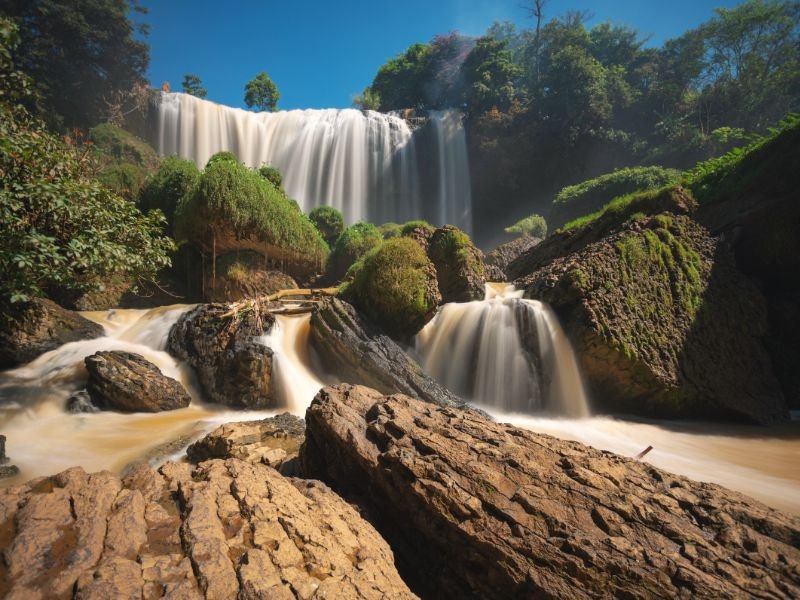
Elephant Waterfall is another stunning waterfall located in Da Lat. Standing at a height of 30 meters, its waters crash into a plunge pool filled with boulders. For those seeking a closer look, you can climb the boulders surrounding the pool.
Datanla Falls
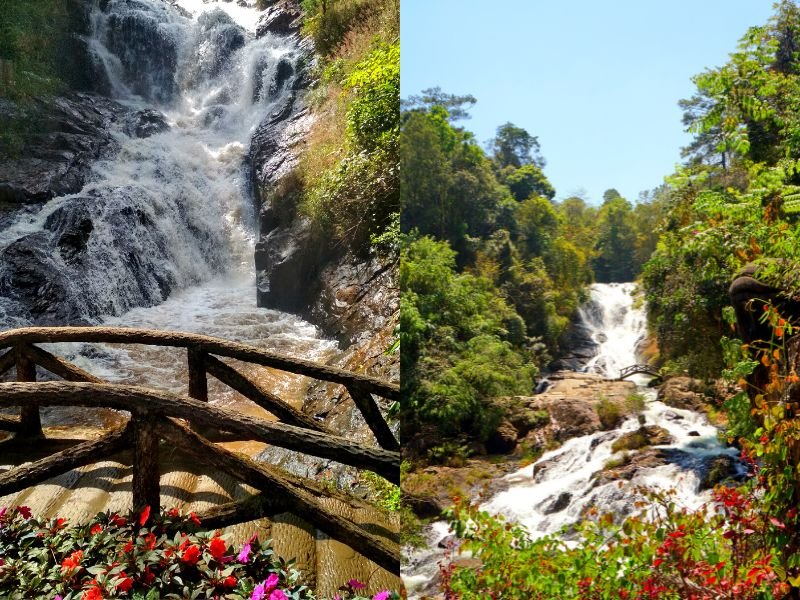
In Da Lat, another waterfall, Datanla Falls, awaits your discovery. While it may not match the size of Elephant and Pongour Falls, locals believe it possesses a unique charm absent in the other waterfalls mentioned. The presence of a bridge near the waterfall could be the distinguishing feature. It seems to lend a romantic narrative quality to Datanla Falls.
More things to do in Da Lat
Planning a trip to Da Lat, Vietnam? This major town in the central mountainous region offers more than just waterfalls.
- Consider a visit to the Phouc Pagoda. This intricately detailed and vibrant pagoda is a sight to behold. Its beauty is captivating even in photos, so imagine the impact it will have when seen in person.
- Take some time to unwind beside Xuan Huong Lake. This is the perfect spot to catch a sunset and capture stunning photographs of the lake as it mirrors the colorful sky.
- Why not spend a day at the Valley of Love? This garden is filled with heart motifs, making it a fun and whimsical place to explore. You can even navigate a heart-shaped garden maze. It’s a great activity to enjoy with friends or family if they’re joining you on your trip.
- Finally, don’t miss the Dalat Flower Gardens. Home to more than 300 varieties of flowers, there’s always something in bloom to admire.
Staying in Da Lat for a few days? Here’s where you can find the best hotel deals in Da Lat.
7. Phan Thiet
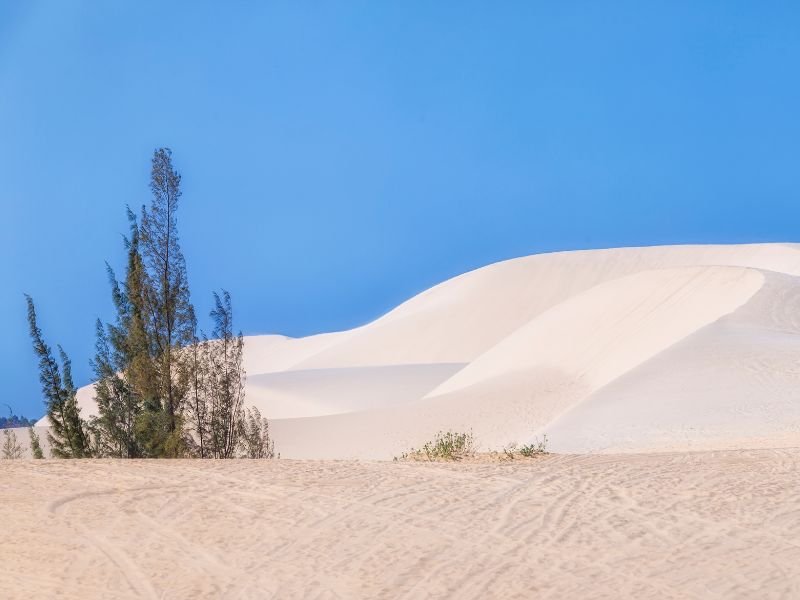
Phan Thiet (Mui Ne) is a coastal city that offers a glimpse of geographical wonders and ancient structures dating back to the 9th century. Located east of Ho Chi Minh City, it provides both locals and tourists with a quick escape from the hustle and bustle of city life.
The beach is a major draw for visitors to Phan Thiet. In addition, some come to admire the fishing port, which is filled with colorful boats, and to savor delicious seafood meals. The coastline is dotted with numerous resorts, providing a wide range of options for your ideal vacation.
With more than 57 kilometers of coastline, Phan Thiet boasts an abundance of beaches where you can relax and unwind. But it’s not just about the beaches. The city also features unique landscapes that are a rare sight in Southeast Asia. Here are some of them:
Red Sand Dunes

A visit to the Red Sand Dunes in Phan Thiet might give you the impression of traveling in a Middle Eastern desert, thanks to the surrounding reddish-brown sands.
Here, you can enjoy sand-sledding to your heart’s content. The cost is just 10,000 VND to 20,000 VND for plastic cards. However, be cautious of scammers who may try to sell these cards at inflated prices.
White Sand Dunes
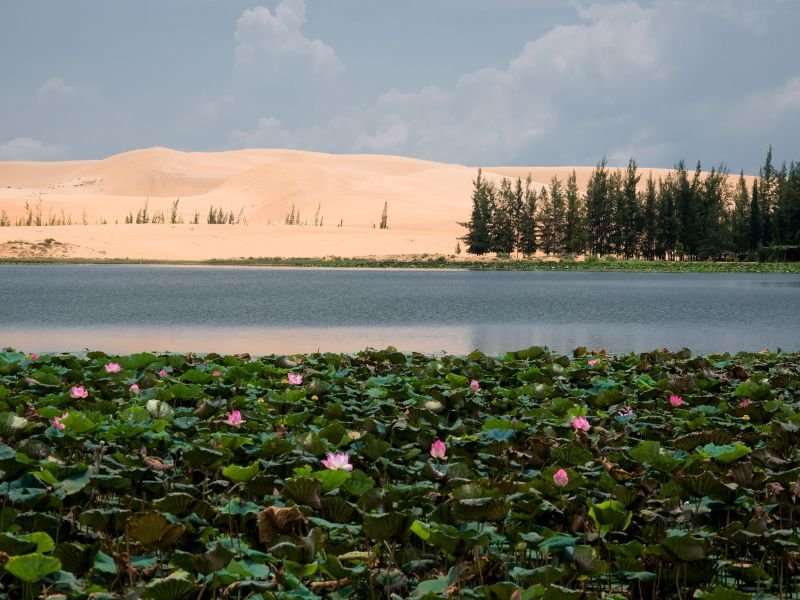
On the other side of the forest in Phan Thiet, near the Red Sand Dunes, you’ll find a lighter version of the dunes. This time, they are a yellowish-white color. These sand dunes lead to a small lagoon adorned with blooming lotus flowers. They offer excellent opportunities for adventure and photography.
Fairy Stream
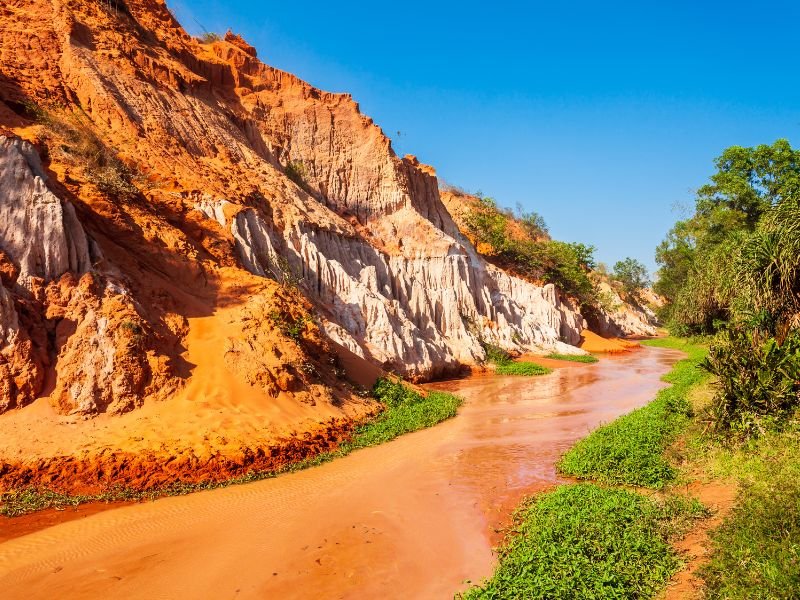
One of the most exciting landscapes to see in Phan Thiet is the Fairy Stream. Often compared to a miniature version of the Grand Canyon in Arizona, this area features soft red sand and towering limestone rocks.
For a more immersive experience at the Fairy Stream, consider exploring the area barefoot. The creek in the Fairy Stream is only a few centimeters deep, making it safe to walk through without shoes.
More things to do in Phan Thiet
Beyond the thrill of sledding at the dunes, Phan Thiet offers a variety of other experiences:
- Explore ancient structures. In Phan Thiet, you’ll find the Ancient Po Shanu Cham Towers. These are considered significant cultural landmarks of the ancient Champa Kingdom, dating back to the 8th century.
- Experience kite surfing at Mui Ne beach. This beach, with its 15 kilometers of sandy shores, is ideal for water activities such as kite surfing, surfing, and sunbathing.
- Discover the colorful boats in Mui Ne. The local fishing village is home to a multitude of vibrant boats. It’s a fantastic spot to capture images of the daily life of Vietnamese people at sea.
- Ascend Ta Cu Mountain. If you’re seeking a change from the seaside, consider a two-hour hike up Ta Cu Mountain. Here, you’ll encounter limestone caves, lush rainforests, and ornate Buddhist structures, offering a different perspective of Phan Thiet.
Planning a multi-day visit to Phan Thiet? Find some the great accommodation deals here.
Save it on Pinterest.



